unit 9: evolution - BIO (brown)
1/78
There's no tags or description
Looks like no tags are added yet.
Name | Mastery | Learn | Test | Matching | Spaced |
|---|
No study sessions yet.
79 Terms
what was the 1st viewpoint of the climate of times in the 1800s?
- fixity of species (remain unchanged)
- earth was about 4000 years old
what was the 2nd viewpoint of the climate of times in the 1800s?
- evolution did exist
- the scientist Lyell said that the earth was 4 million years old to give enough time for evolution
where did charles darwin travel around?
south america
what theories did darwin develop from his time in south america?
- natural selection
- phylogeny
what book did darwin write?
on the origin of species by natural selection
what was darwin's book met with?
ridicule and debates
(debates still happen today)
what were the 4 parts to darwin's theory of natural selection?
1. variation exists within each species
2. some members of one species are better suited for survival due to certain variations and leave more offspring (natural selection)
3. overtime, natural selection leads to old species being replaced by new species as less successful members of the species become extinct
4. clear evidence (fossils) show species today have evolved from ancestors that are now extinct
what was one of the organisms that darwin based his theory of natural selection on?
finches
what did darwin realize when he began to study finches?
birds on different islands had traits that were suited to the island's habitat
how long ago was the origin of the earth believed to be?
4.5-5 billion years ago
what did earth originate from?
a swirling cloud of dust and gas
(big bang was 13.8 years ago)
how long ago was early earth believed to be?
3.5 billion years ago
what was the first type of cell to exist on earth?
archaeabacteria
what was the early earth like?
- extreme heat
- noxious gases: methane + ammonia
- smoke and clouds
- little sunlight (very dark)
what formed on the early earth?
- molecules
- then larger organic molecules (carbs, lipids, proteins)
what were lipids like on the early earth?
"primordial soup"
when was the first cell formed?
3.5 billion years ago during early earth
what were the first cells like?
- prokaryotic
- capable of living in extreme environments
- used energy from chemicals --> chemosynthetic
when did earth become less extreme?
3 billion years ago
what was happening to make earth less extreme 3 billion years ago?
- temps decreased as earth cooled
- sunlight was able to penetrate the atmosphere as it cleared
- early bacteria evolved, becoming capable of using sunlight to get energy to produce food
when did autotrophs come to earth?
2.5 billion years ago
how did autotrophs contribute to the environment?
the photosynthetic bacteria produced oxygen, which altered the atmosphere
when did the 1st living thing develop on earth? what type of cell was it?
- 3.5 billion years ago
- prokaryotic cells
when were the 1st complex cells developed on earth? what type of cell was it?
- 1.5 billion years ago
- eukaryotic cells
what are the 2 theories of how eukaryotic cells formed?
- infolding
- endosymbiosis
infolding
membranes fold in to form organelles
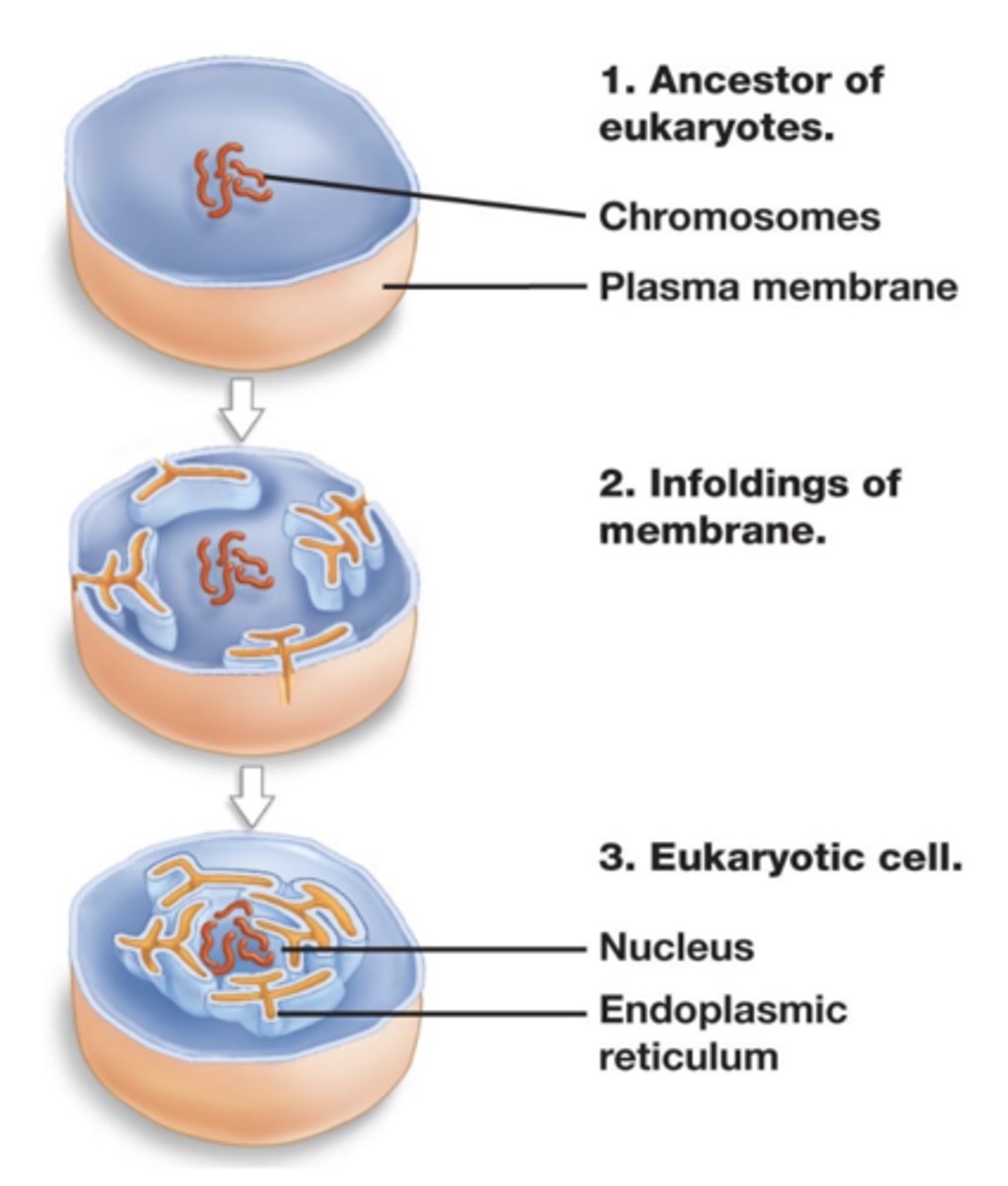
endosymbiosis
one cell engulfs another, small one to make a more complex structure
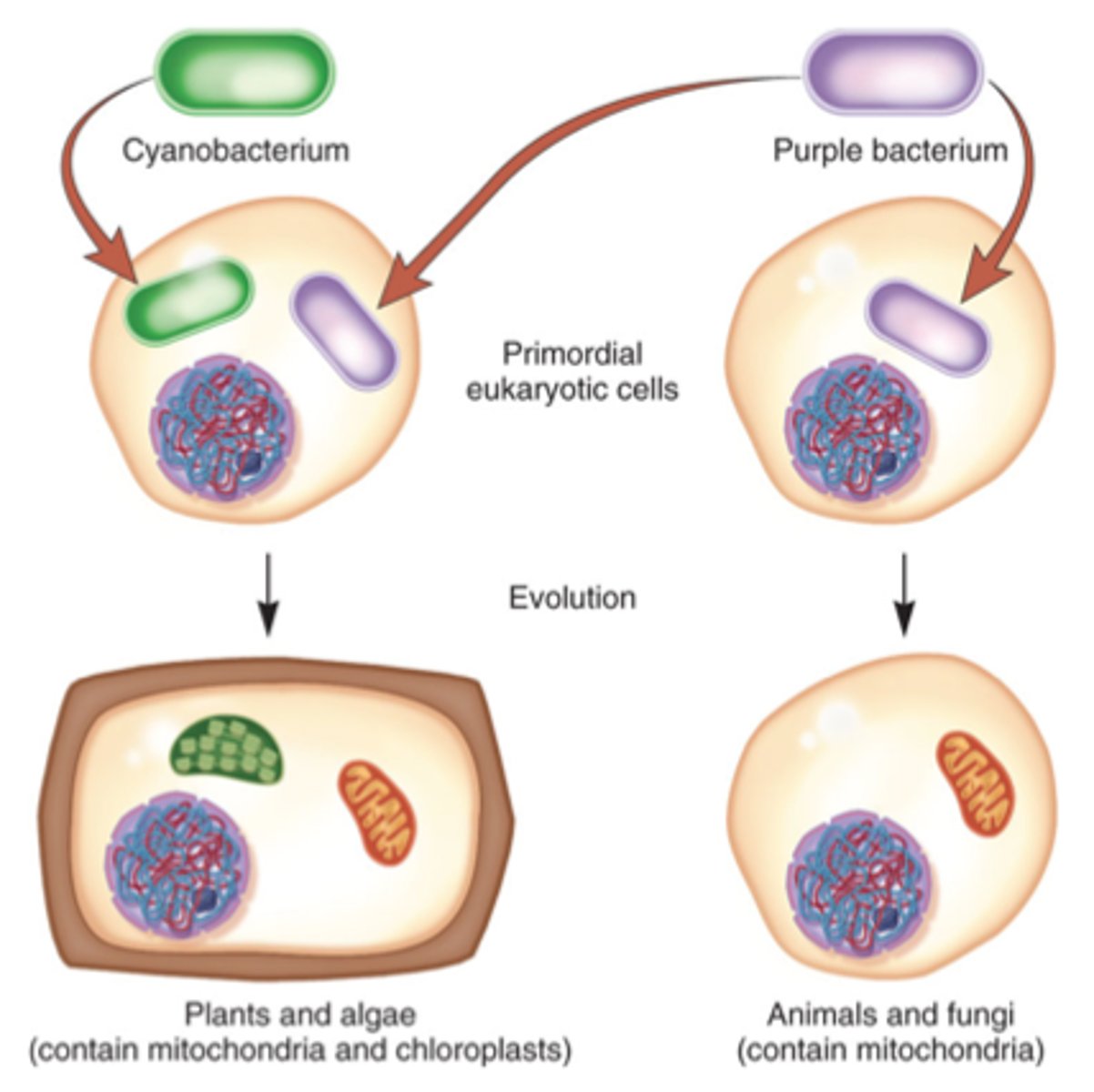
fossils
preserved remains of ancient organisms
homologous structures
structures having a common evolutionary origin --> similar in structure even if their functions are different
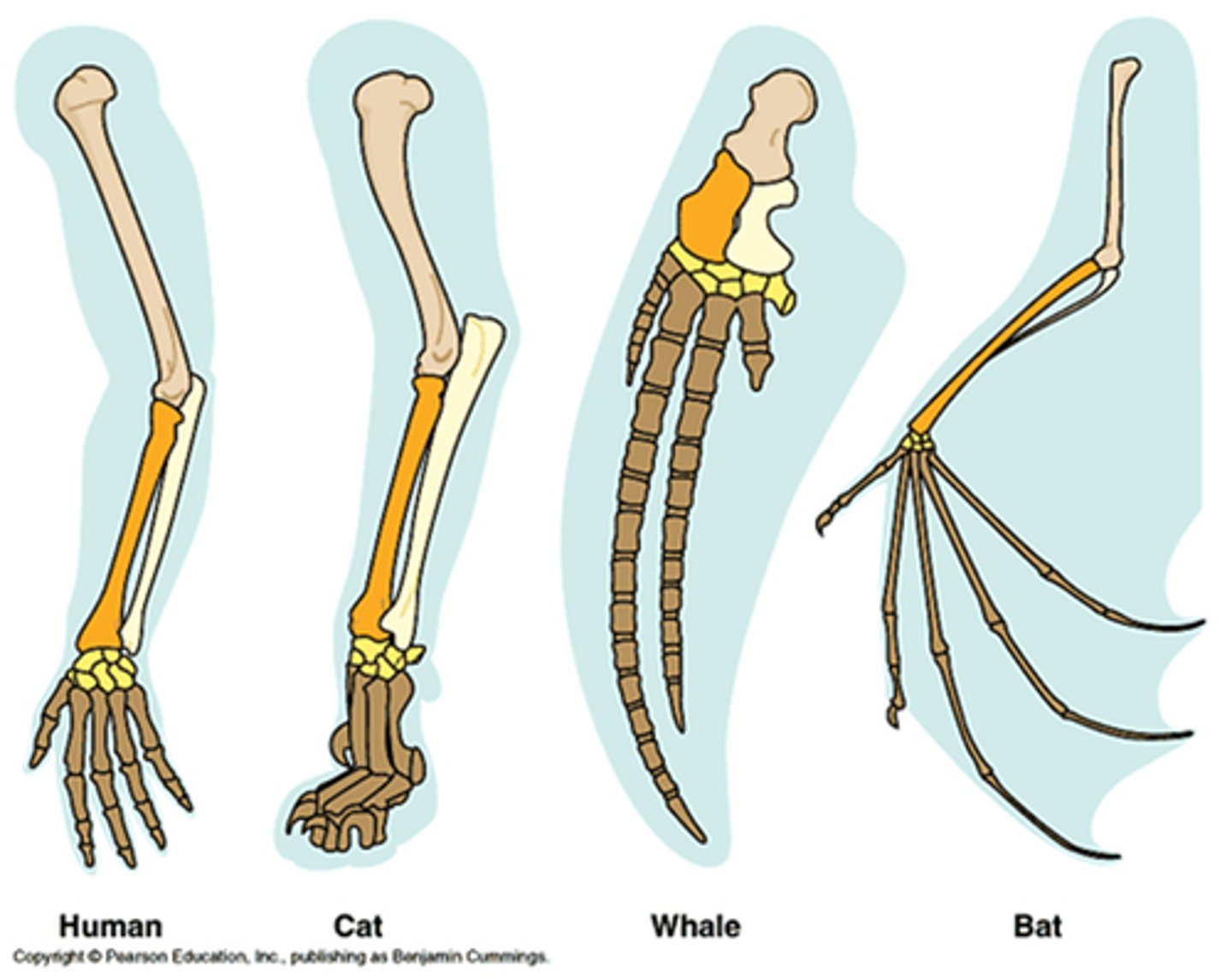
analogous structures
different structures evolved INDEPENDENTLY in 2 living organisms to serve the same purpose

vestigial structures
feature that a species inherited from an ancestor but that is now less elaborate and functional than in the ancestor
ex: human tailbone, pelvis in baleen whales
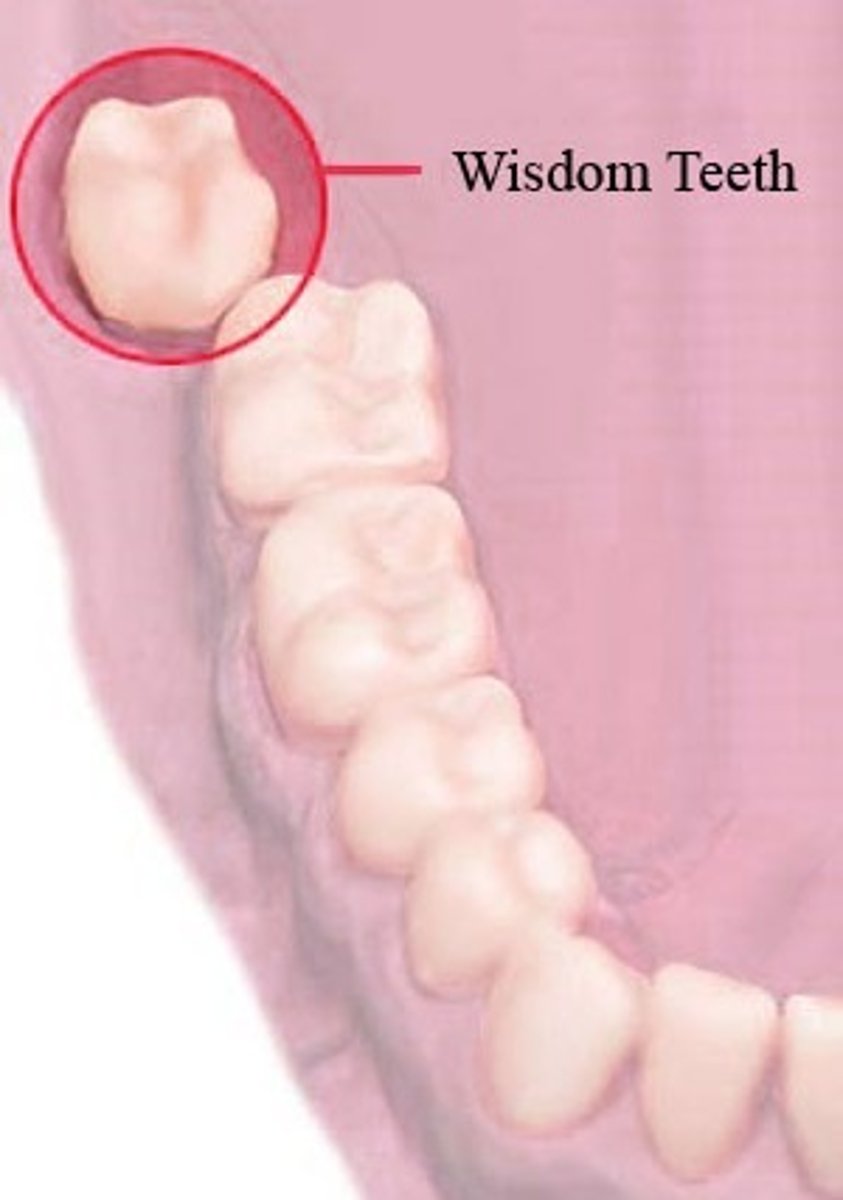
embryonic development
embryos of different organisms are similar, especially in the early stages of development
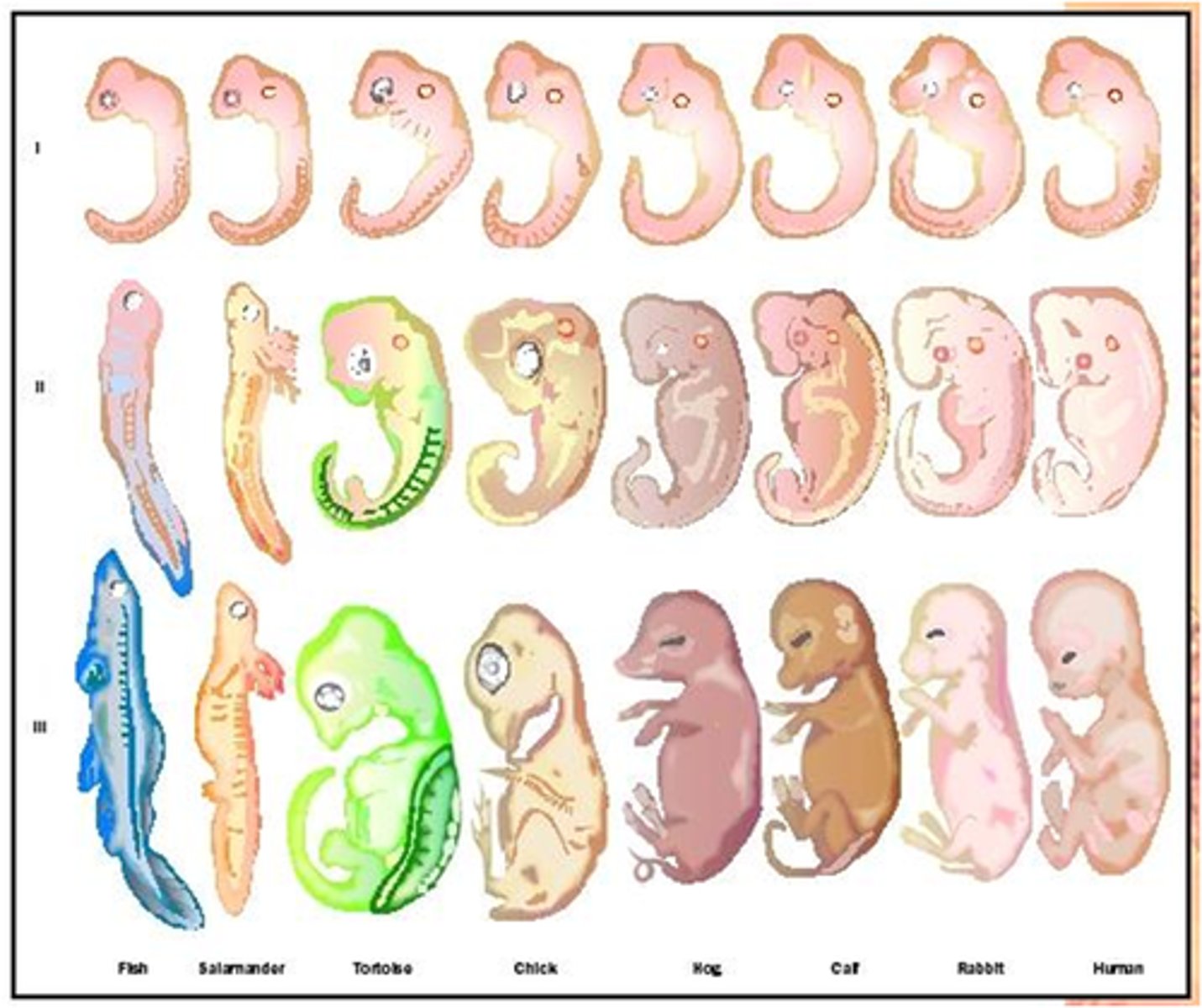
what is similar with the DNA in all eukaryotic organisms?
they all have the same basic structure
what do many organisms share?
a high percentage of the same DNA
(ex: humans and chimpanzees: 98-99%)
KNOW HOW TO READ A PHYLOGENETIC TREE!!!!!!!!!!!!!!!!
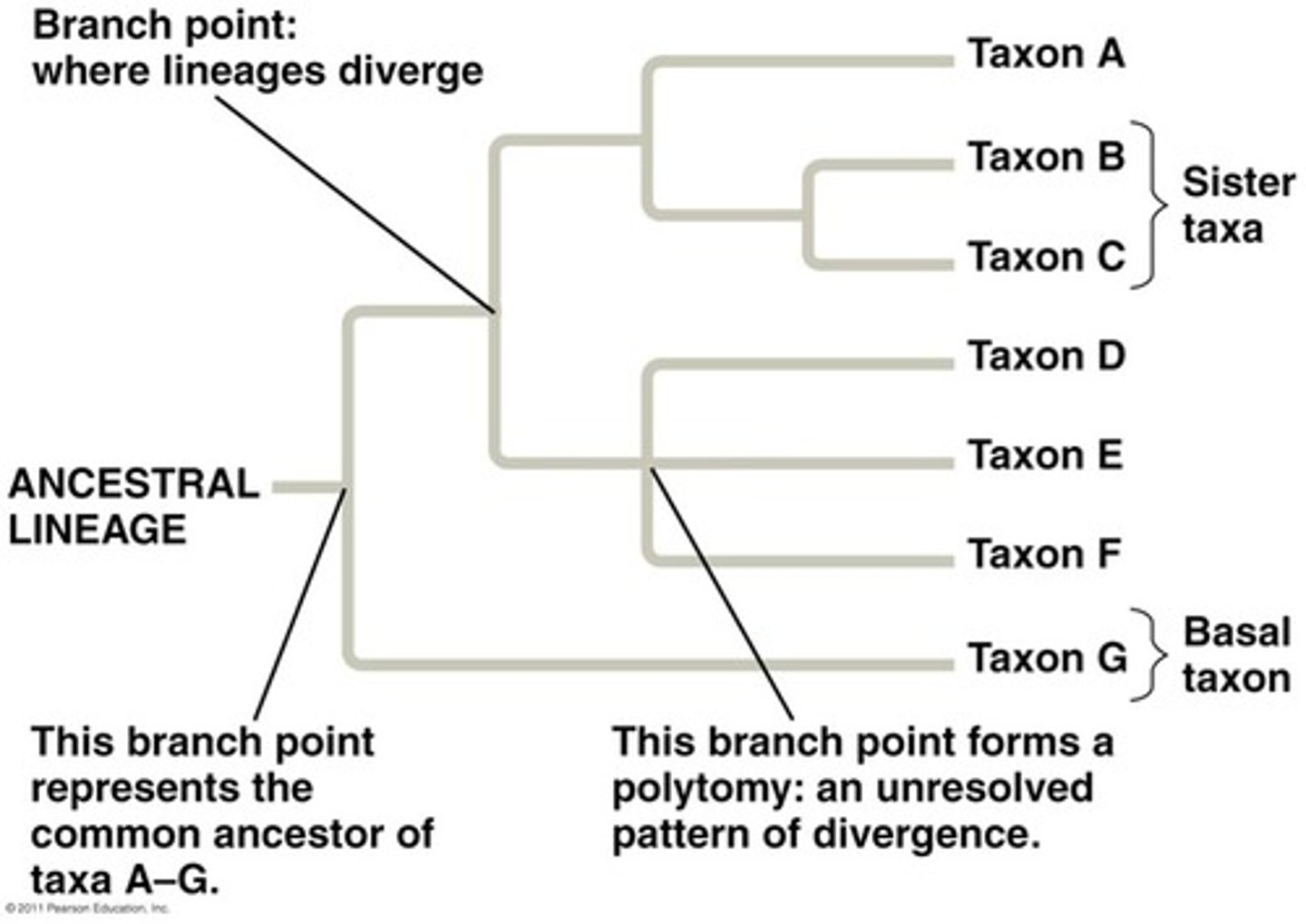
phylogeny
theory that all organisms on the planet are related to each other
what was the original phylogeny theory based on? what do we use today?
- morphology (the way on organism looks)
- DNA
phylogenetic tree
diagram showing the relationships between organisms
what is the original source of all genetic variation?
mutation
is mutation low or high for most organisms?
low
what can be a powerful mechanism of evolution regarding mutation?
natural selection acting on the results of a mutation
non-random mating
organisms may prefer to mate with others of the same genotype or of different genotypes
although non-random mating won't make allele frequencies in the population change by itself, what can it do?
alter genotype frequencies
what are the 2 types of non-random mating?
- assortative
- disassortative
assorative mating
preference for similar genotypes or phenotypes
disassortative mating
preference for different genotypes or phenotypes
gene flow
involves the movement of genes into/out of a population
what can gene flow be due to?
either the movement of individual organisms or their gametes
(ex: eggs + sperm, e.g., through pollen dispersal of a plant)
through gene flow, organisms and gametes may enter a population have have new alleles or bring in existing alleles. how does this alone cause gene flow?
they bring it in or have it in different proportions than those already in the population
genetic drift
changes in allele frequency due to chance events
where can genetic drift occur?
in any population of non-infinite size
where does genetic drift have a stronger effect?
smaller populations
when does natural selection occur?
when 1 allele (or combination of alleles/different genes) makes an organism more or less able to survive and reproduce in a given environment
what happens if an allele reduces fitness?
its frequency will tend to drop from one generation to the next
species
an interbreeding population of organisms that can produce healthy offspring
can evolution of a new species be witnessed?
yes
gradual development
species evolve through gradual buildup of changes

punctuated development
species evolve quickly in rapid bursts, with long periods of stability in between

convergent evolution
SIMILAR adaptation arise between DIFFERENT species in SIMILAR environments
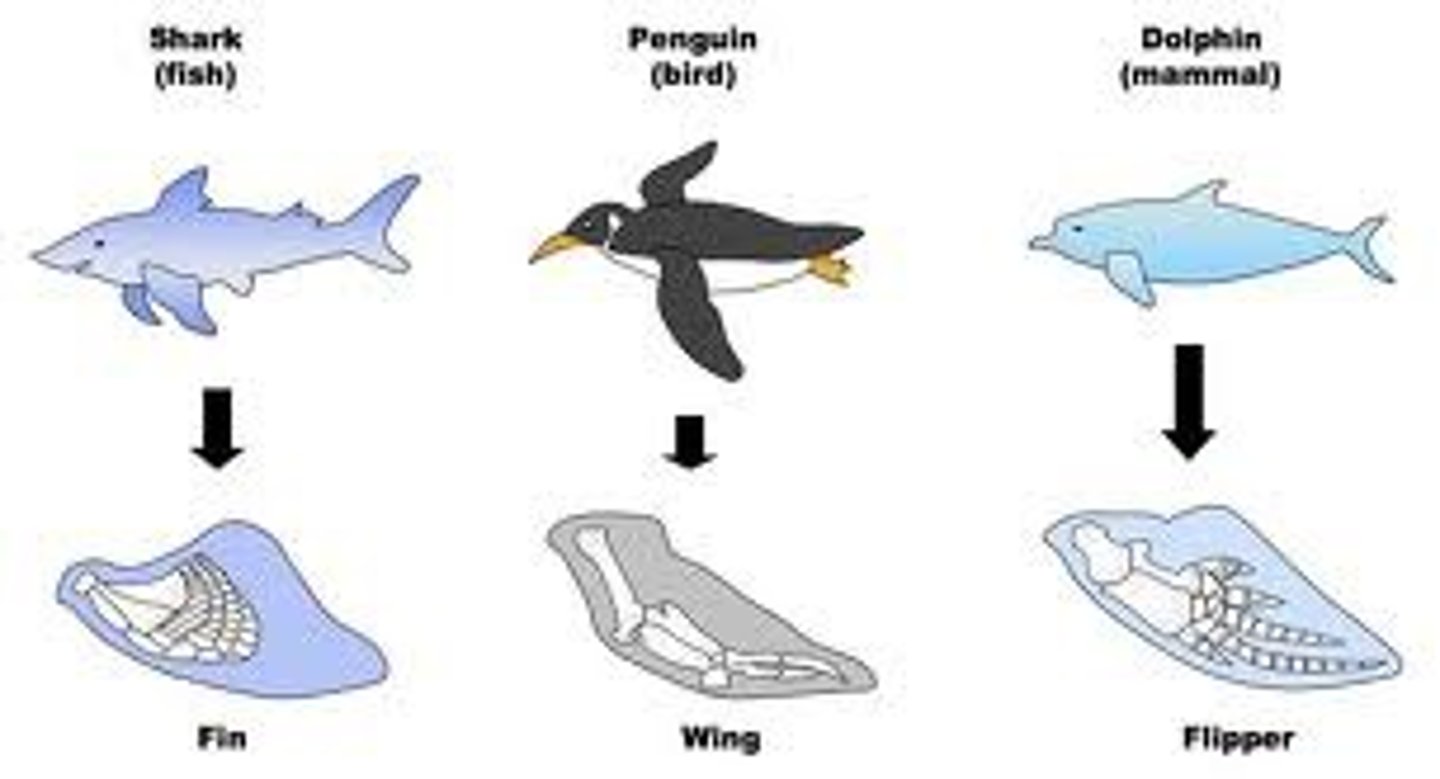
adaptive radiation
(divergent evolution)
a population starts as ONE species, and then changes into MULTIPLE species based on adaptations to the environment
ex: darwin's finches

how many ways can natural selection affect the distribution of phenotypes in a population?
3 main ways
what does phenotype distribution affect?
the percent of the population that has certain traits
(color, height, etc)
stabilizing selection
intermediate phenotypes are more fit than extreme ones
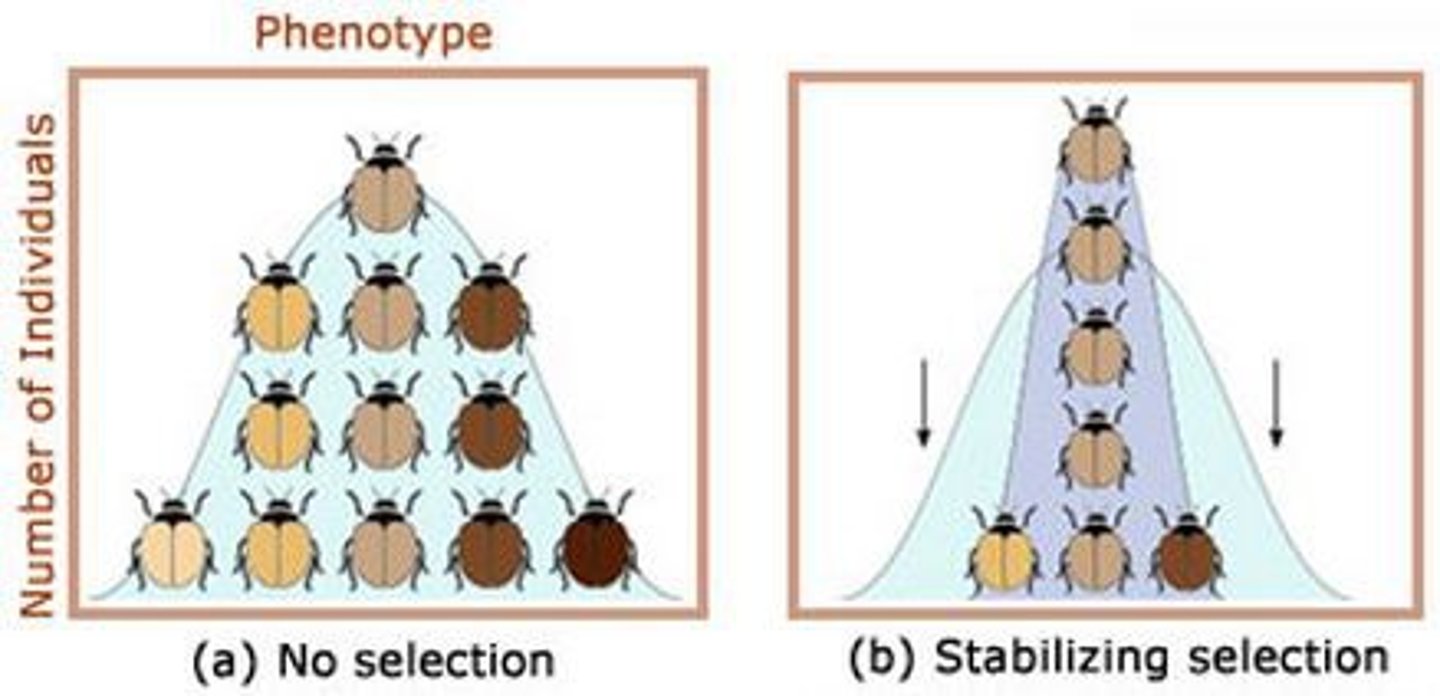
what does the curve do in stabilizing selection?
tends to narrow the curve
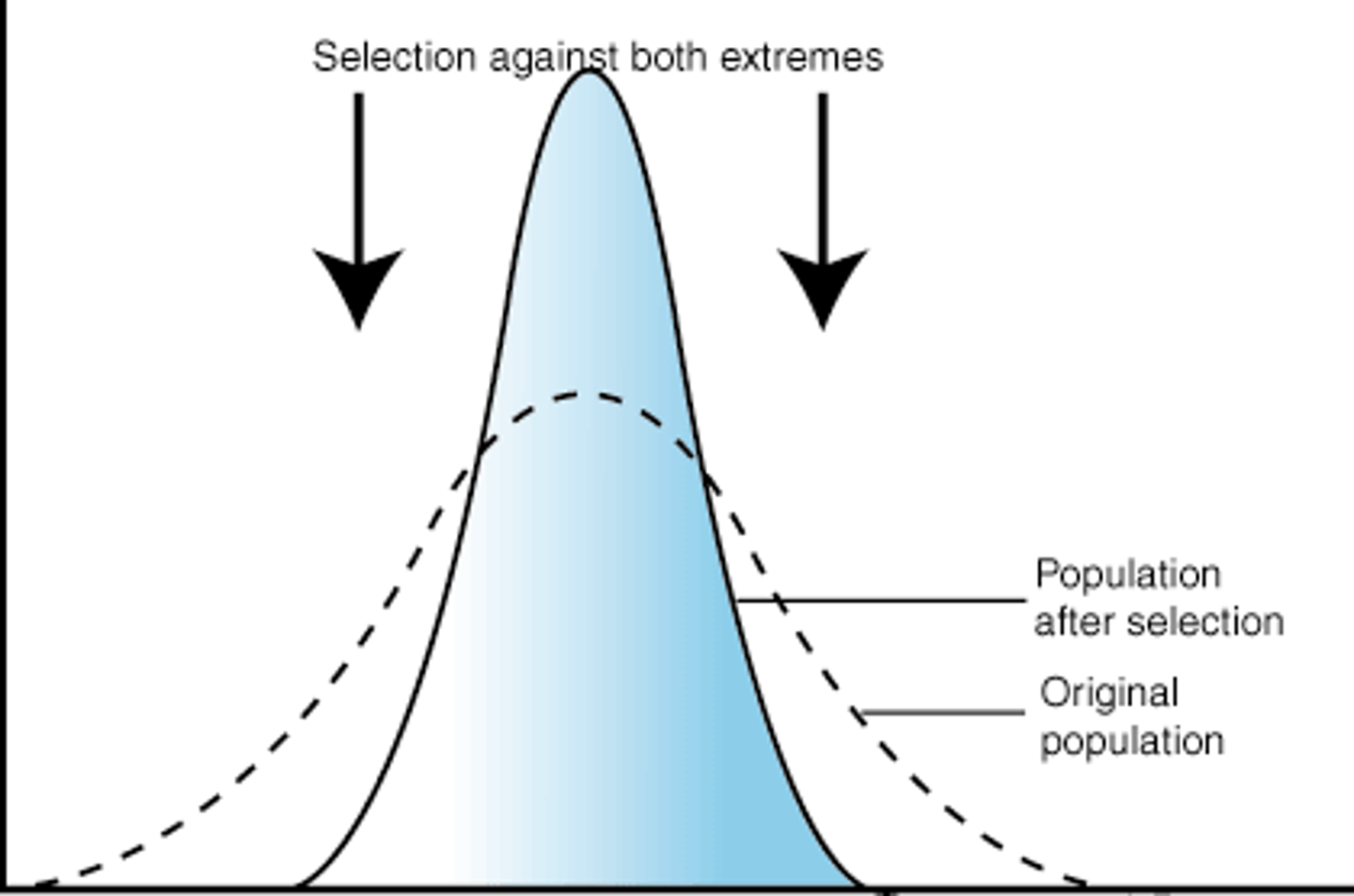
directional selection
1 extreme phenotype is more fit than all the other phenotypes
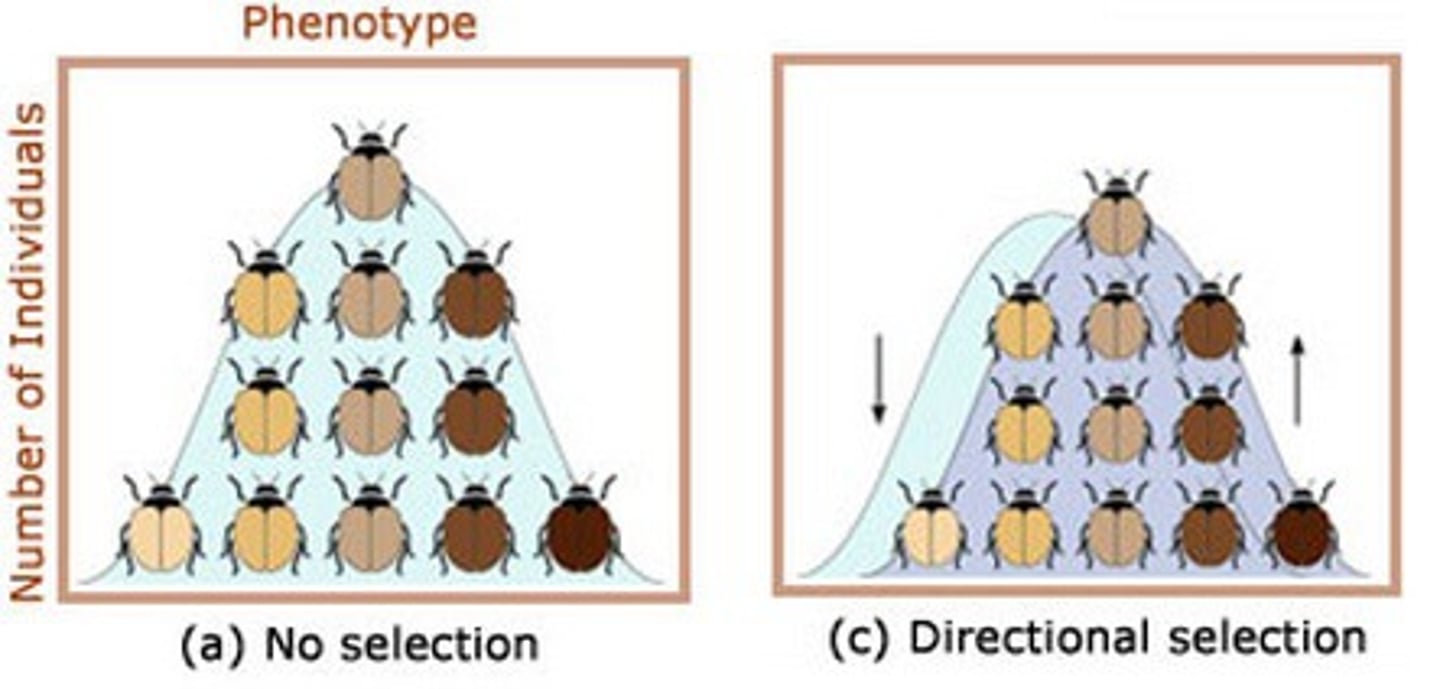
what happens to the curve in directional selection?
it shifts towards the favorable phenotype
(right or left)
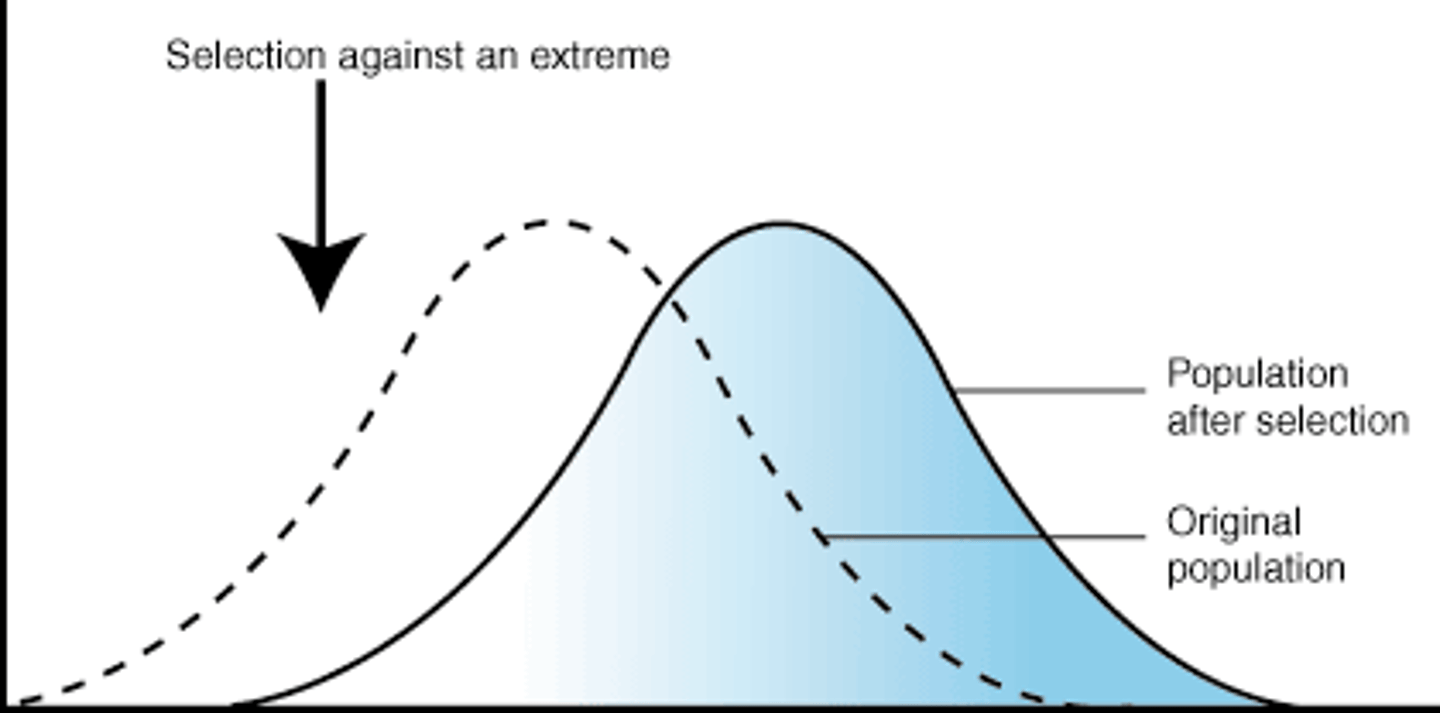
disruptive selection
both extreme phenotypes are more fit than those in the middle

what does the curve do in disruptive selection?
it has multiple peaks
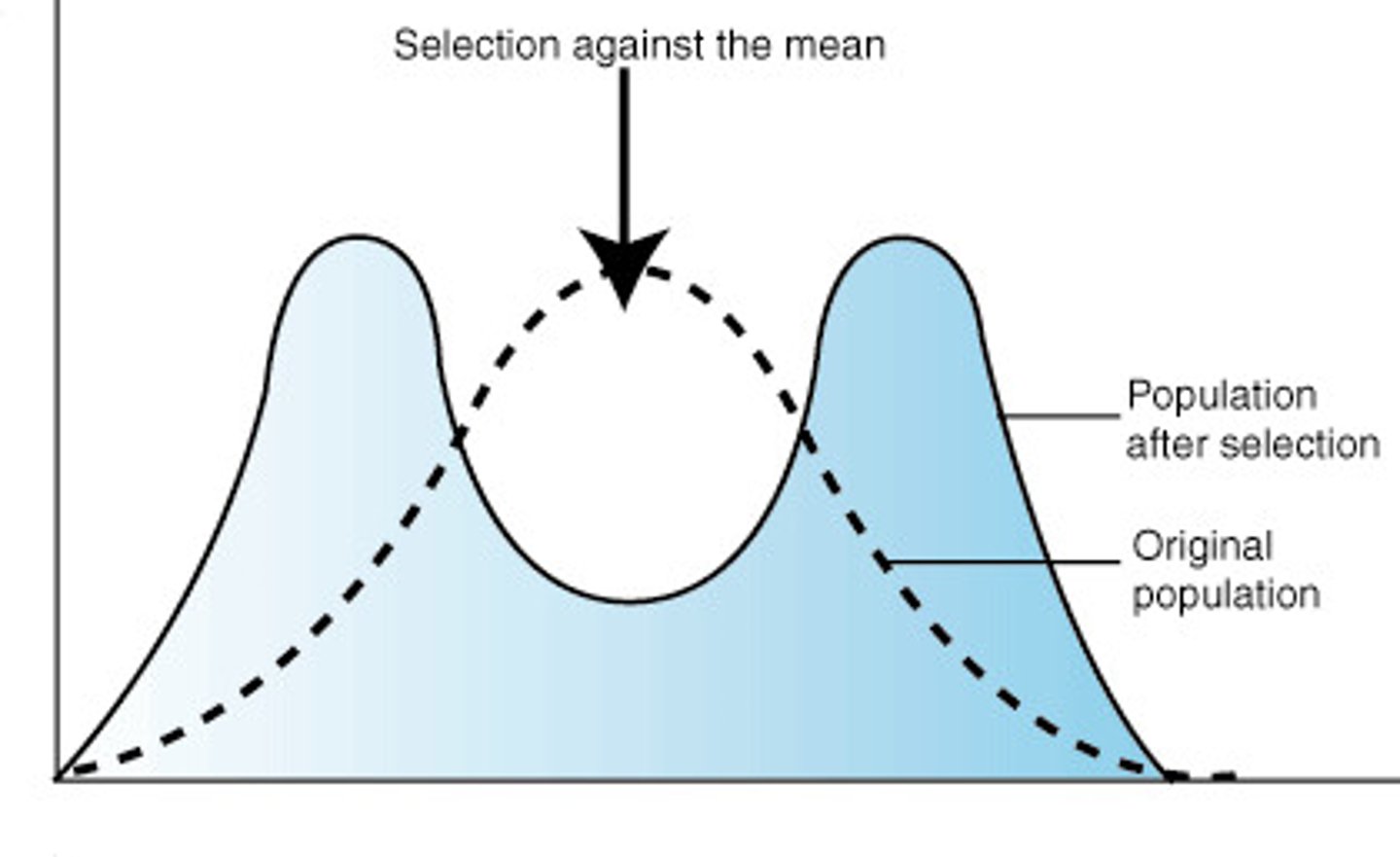
small scale evolution
changes of allele frequency in a population from one generation to the next
(ex: peppered moth)
large scale evolution
the descent of different species from a common ancestor over many generations
(ex: humans)
primates
an order of mammals, split into lemurs, monkeys, and a group containing just great apes and humans 36 million years ago
hominids
primates that stand up
when did hominids begin evolving?
about 7 million years ago
how many species are in the hominids? how many are "homo"?
- hominids: 19
- homo: 7
what was the first homo species? how old are they?
- 1st: homo habilis
- age: ~ 2 million years
where did the first homo sapiens evolve? when?
- africa
~ 150,000 - 200,000 years ago
what is "lucy"?
one of the most complete hominid skeletons found
what species is lucy?
Australopithecus afarensis
(a possible homo sapien ancestor)
how many legs did lucy walk on? what did she look like when she walked?
- 2 legs
- looked like a chimp